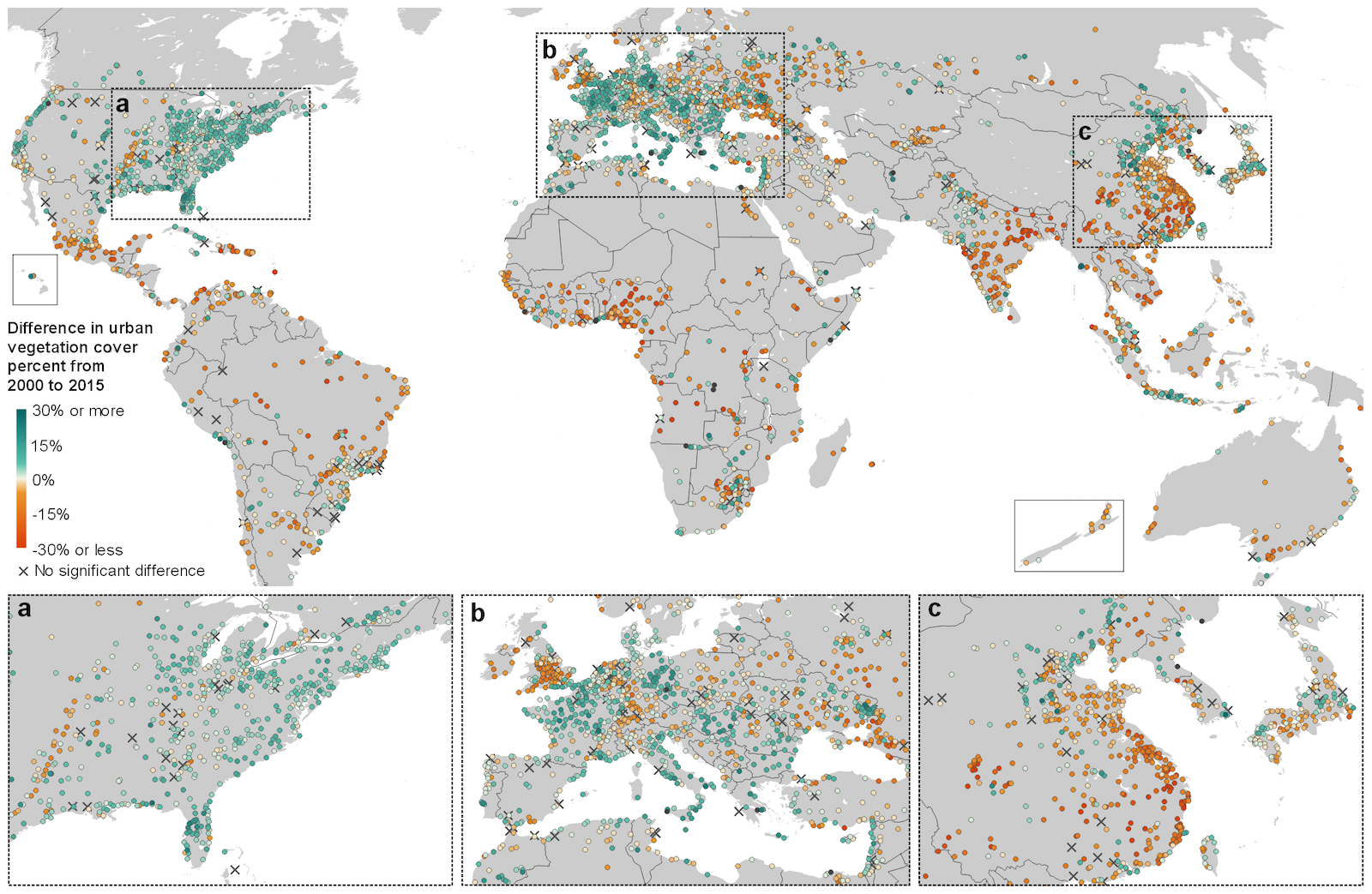Mapping vegetation cover across all cities
How green are cities around the world? Are they becoming more or less green?

Urban vegetation supports biodiversity and provides many benefits to the residents of towns and cities, improving public health and well-being. Urban vegetation cover is therefore a critical indicator for urban sustainability. Despite the importance of urban vegetation for people, and ongoing rapid rates of urban change, this ecosystem has not received global quantification or monitoring. Until this work was conducted, we did not know how much urban green space existed globally, or whether cities around the world are becoming more or less vegetated.
The research was led by Dr Dan Richards, principal investigator of the Natural Capital Singapore project, and external page Richard Belcher, previously a member of the Future Cities Laboratory. The researchers used thousands of satellite images from around the world to map urban vegetation across all urban areas larger 15 km2, in both 2000 and 2015. This analysis covered almost 6000 urban areas and 500,000 km2. Cloudy sections of the satellite images were replaced, to build up a composite image for 2000 and 2015 that showed the whole urban area.
In 2015, urban vegetation covered 210,000 km2, which is equivalent to the size of Belarus. The overall proportion of urban vegetation cover declined globally between 2000 and 2015. However, this proportion varied highly between cities. Declines were particularly common in the Global South. Conversely, proportional vegetation cover increased in some urban areas in eastern North America and parts of Europe. Most urban areas that increased in vegetation cover also increased in size, suggesting that the observed net increases were driven by the capture of rural ecosystems through low-density suburban sprawl. Far fewer urban areas achieved increases in vegetation cover while remaining similar in size, although this trend occurred in some regions with shrinking populations or economies.
The study external page Global Changes in Urban Vegetation Cover is published in Remote Sensing.
Richards, D.R.; Belcher, R.N. Global Changes in Urban Vegetation Cover. Remote Sens. 2020, 12, 23.